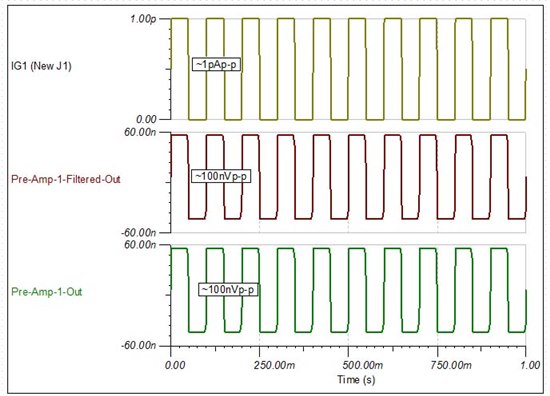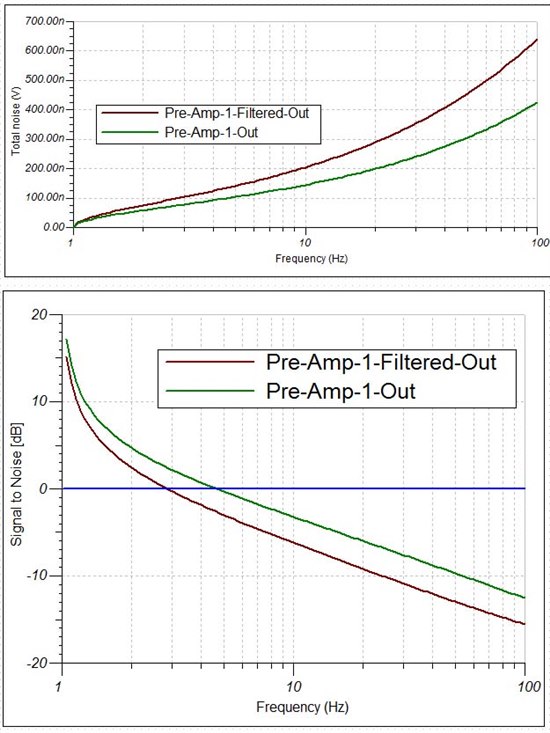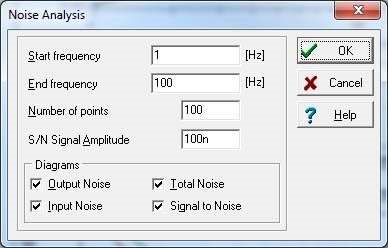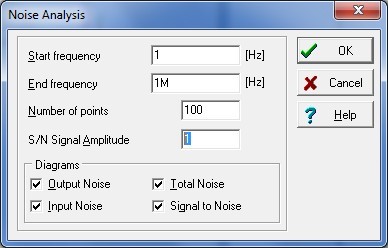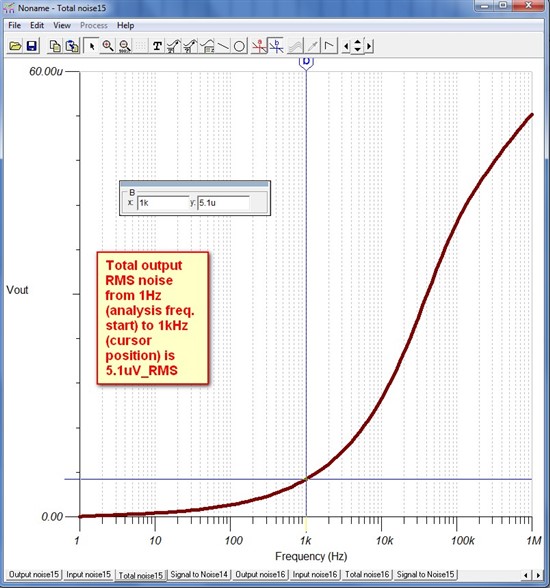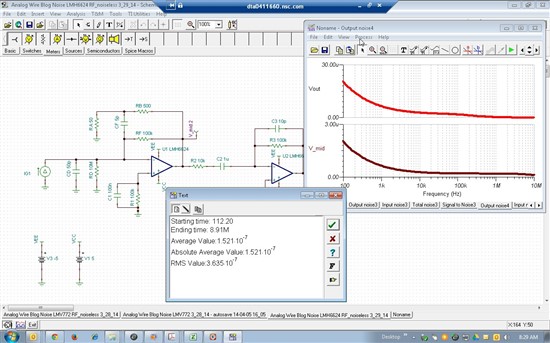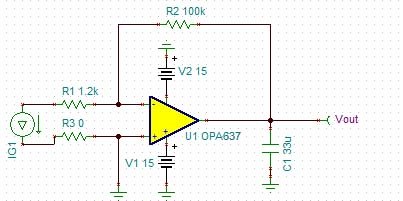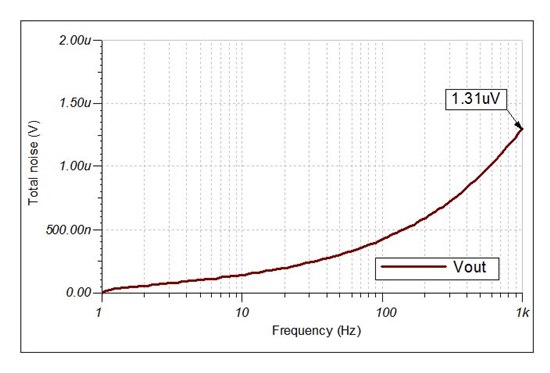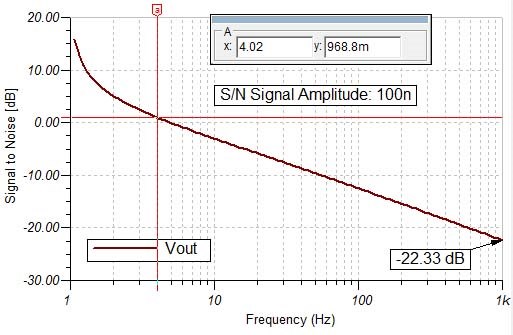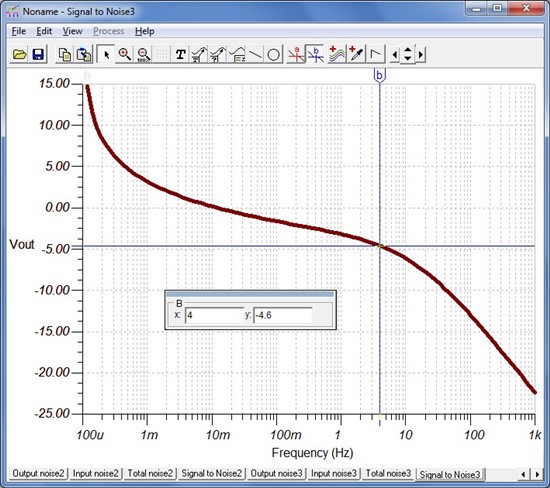I've been designing electronics for decades, but have very seldom done formal noise analysis. I've drawn an initial schematic in TINA (version 9.3.50.40 SF-TI) and I've gotten out a plot of SNR.
I did recent research so I know what V/sqrt(Hz) means. I thought that meant that if I square my bandwidth and multiply it by the V/sqrt(Hz), I would get noise in simply Volts. I thought that was a scalar result. However, TINA is reporting curves along a frequency axis for both Total noise (V) and SNR.
Does this possibly mean that I pick a single frequency on this scale, and that Total noise (V) at that point becomes the scalar I'm seeking? Specifically, if my bandwidth is 5Hz (yes, very slow), then I look on the graphs to find my "Pre-Amp-1-Filtered-Out" with about 142nV of noise, and an SNR of about -3.24dB (0.688, less than one, using 20log, get confused about 20log vs 10log sometimes).
Is that right? 142nV of noise and SNR = 0.688? This DOES INDEED match up with the ballpark I expect at this point.
Also, I set the noise analysis S/N SIgnal Amplitude to 100nA. This is the output level I expect from the input of 1pA and the 1E5 gain. Was that the right thing to do? It did put my SNR = 0.688 at a believable level, relative to some hand calcs and some excel calcs I've done in the past.
Or am I totally missing something?
Thanks very much for your help.
I don't see how to attach the actual project, so I'll attach what I believe is enough info in images to fully describe it.



